2016 Hyundai Sonata plug-in hybrid problems
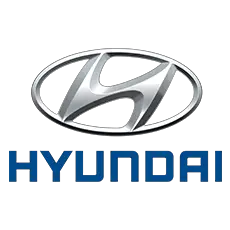
The Hyundai Sonata (Korean: 현대 쏘나타) is a mid-size car that has been manufactured by Hyundai since 1985. The first generation Sonata, which was introduced in 1985, was a facelifted version of the Hyundai Stellar with an engine upgrade, and was withdrawn from the market in two years due to poor customer reaction. While the nameplate was originally only sold in South Korea, the second generation of 1988 was widely exported.
The Sonata is currently manufactured in South Korea where their headquarters are located, China and Pakistan. It was named after the musical term, sonata.
First generation (Y1; 1985)
The first Sonata was introduced to compete with the Daewoo Royale series and was a more luxurious version of the Stellar. It included cruise control, power seats, head lamp washers, power brakes, electric operated adjustable side mirrors and chrome bumper trims. The Sonata was available with two trim options in Korea: Luxury and Super (the latter only available with a 2.0-liter engine). In the domestic market Hyundai attempted to sell the Sonata as an executive car using catchphrases like "Luxury car for VIP"; however, as the Sonata was based on the Stellar without any major changes, it was seen by the public as no more than a luxury version of the Stellar. In 1987 Hyundai added two tone color schemes and a trip computer option, but sales soon went down and the car was discontinued in December of that year. The Sonata was sold only in the South Korean domestic market. The vehicle was unveiled in South Korea on 4 November 1985.
Engine choices included 1.6-liter Mitsubishi Saturn (only available outside the domestic market), 1.8- and 2.0-liter Mitsubishi Sirius inline-fours. The latter unit also found its way into the 1987 and later Stellar, and in MPI form the 1986 Hyundai Grandeur. The body was a largely unchanged Hyundai Stellar.
It was sold in New Zealand (right hand drive) with the 1.6-liter Mitsubishi engine with the five-speed manual gearbox; an automatic transmission was an optional extra. The original importer was a unit of the Auckland-based Giltrap Motor Group.
The final version of the Stellar was known as the Stellar 88 and was launched to celebrate the 1988 Summer Olympics in Seoul. Afterwards, Hyundai discontinued the Stellar and replaced it with the all-new Sonata.
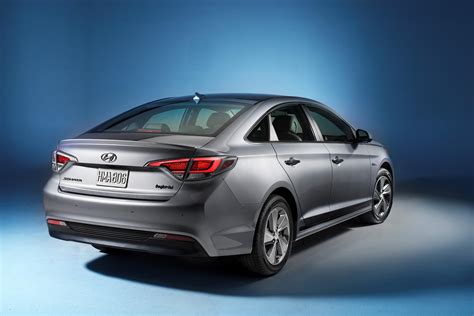
Social links
Common 2016 Hyundai Sonata plug-in hybrid problems
The Hyundai Sonata Plug-in Hybrid 2016 has been subject to several common problems, primarily related to the hybrid system, transmission, fuel system, and electrical components.
- Voltage Protection Device Failure: A recall was issued for 2,840 examples of the 2016-2018 Hyundai Sonata Plug-In Hybrid, due to a voltage protection device that could render the electric motor inoperative during charging or discharging. This problem could cause the vehicle to lose motive power at speed, increasing the risk of a collision.
- Battery Failure: Several owners have reported issues with the battery failing in 2016-2019 Plug-In Hybrid vehicles, with some experiencing a loss of battery power as early as 40,000 to 50,000 miles. This issue leaves the vehicle inoperable, and replacement batteries are not readily available.
- Gas Cap Does Not Seal Properly: This issue has been reported in the 2017 Sonata Plug-in Hybrid, where the gas cap fails to seal properly, potentially causing the check engine light to illuminate.
- Transmission Shifting Rough: Some owners have reported transmission shifting issues in the 2016 Sonata Plug-in Hybrid, which could lead to a less smooth driving experience.
- Hybrid Charging Light Blinks Red While Driving: This issue has been reported in the 2017 Sonata Plug-in Hybrid, where the hybrid charging light blinks red while driving, potentially indicating an issue with the hybrid system.
- Engine Light On: A few owners have reported engine light issues in the 2016 Sonata Plug-in Hybrid, which could indicate various underlying problems with the vehicle's engine or hybrid system.
- Fuel System Issues: Some owners have reported fuel system problems in the 2016 Sonata Plug-in Hybrid, such as the gas cap not sealing properly, which could lead to check engine light activation.
- Electrical Issues: Electrical problems have been reported in the 2016 Sonata Plug-in Hybrid, with some owners experiencing issues with the voltage protection device and the hybrid system.
- HVAC Issues: A single complaint has been reported regarding HVAC issues in the 2016 Sonata Plug-in Hybrid.
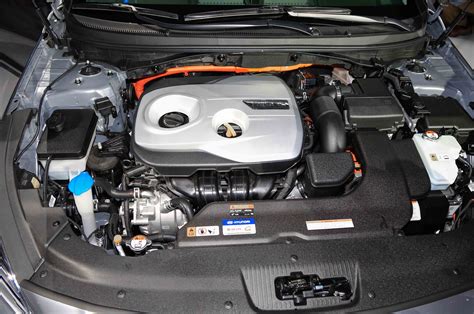
Is Hyundai Sonata Hybrid 2016 reliable?
Very reliable car.
This car has been great for our family. We have owned it for 4 years with no issues. If you are looking for a smaller reliable car with great gas mileage this is it!
How many miles will a 2016 Hyundai Sonata hybrid last?
Hyundai Sonata
When it comes to longevity, the Sonata is estimated to last 200,000 to 250,000 miles or 13 to 17 years with regular maintenance. It also has a better reliability rating and lower annual repair cost than most other midsize cars.
Are there any recalls on the 2016 Hyundai Sonata hybrid?
Summary: Hyundai Motor America (Hyundai) is recalling certain 2017-2018 Sonata, 2016-2018 Sonata Hybrid, 2018-2020 Accent, and 2016-2017 Azera vehicles. The trunk latch may become damaged, preventing the opening of the trunk from the inside.
Is Hyundai Sonata Hybrid reliable?
Like the regular Sonata, the Sonata Hybrid has built a reputation as a sensible, reliable midsize sedan at an attractive price.
2016 Hyundai Sonata plug-in hybrid complaints
The NHTSA has received 0 complaints about various vehicle components related to the 2016 Hyundai Sonata plug-in hybrid.
You can leave your car complaint via the special form below.
2016 Hyundai Sonata plug-in hybrid recalls
The National Highway Traffic Safety Administration (NHTSA) has issued 2 recalls for different components of the 2016 Hyundai Sonata plug-in hybrid.
- Manufacturer: Hyundai Motor America
- Components: EXTERIOR LIGHTING:TURN SIGNAL
- Summary: Hyundai Motor America (Hyundai) is recalling certain 2015-2017 Sonata, 2016-2017 Sonata Hybrid, and Sonata Plug-In Hybrid vehicles. The Smart Junction Box (SJB) software logic may not properly interpret the signals received from the multifunction switch, which could cause the turn signal to activate in the opposite direction of what the driver intended.
- Consequence: A turn signal that activates in the opposite direction of what was intended by the driver increases the risk of a crash.
- Remedy: Dealers will update the SJB software, free of charge. Owner notification letters were mailed November 19, 2021. Owners may contact Hyundai customer service at 1-855-371-9460. Hyundai's number for this recall is 210.
- Manufacturer: Hyundai Motor America
- Components: HYBRID PROPULSION SYSTEM
- Summary: Hyundai Motor America (Hyundai) is recalling certain 2016-2018 Hyundai Sonata Plug-In Hybrid vehicles. These vehicles are equipped with a Voltage Protection Device (VPD), designed to protect the high voltage battery module, that may activate inadvertently.
- Consequence: If the VPD activates while the vehicle is being operated in Electric Vehicle (EV) mode, there may be a loss of power, increasing the risk of a crash.
- Remedy: Hyundai will notify owners, and dealers will remove the VPD switch and install a new Battery Management System (BMS) that contains an Overvoltage Protection Device (OPD). The recall is expected to begin May 2018. Owners may contact Hyundai customer service at 1-855-371-9460. Hyundai's number for this recall is 175.
Negative 2016 Hyundai Sonata plug-in hybrid car reviews
Positive 2016 Hyundai Sonata plug-in hybrid car reviews
-

While researching the Chevy Volt and Ford Fusion Energi, I stumbled across the Sonata Plug-in Hybrid and I'm so glad I did! Hyundai has done an excellent job with this car. The interior is spacious, refined, and well laid out with high-quality materials and intuitive controls and electronics interfaces. The Limited version feels luxurious with a myriad of features that rival our S Class Mercedes. Although it's only rated at 27 miles of battery range, I've consistently been getting 30-35 miles over the last two weeks before reverting to hybrid operation, where it gets an average of just over 40 MPG. On a 1000 mile trip combining interstate and secondary highways, it averaged about 41 MPG, which is impressive considering we were going 75-80 on the freeway sections. On one 70 mile section of Highway 1 in northern California, it actually achieved 48 MPG. The comfort level is high with excellent ventilated seats, an extremely smooth and controlled ride, and a noise level that's about as quiet as any car I've been in. The navigation/information/media system is outstanding with loads of information and easy to use. The price at $39,000.00 may seem high, but rebates and dealer discounts brought the price down over $5,000.00. In addition, the California rebate of $1,500.00 and Federal tax credit of $4,900.00 (?) drops the net price down below $28,000.00, which is a screaming deal for a car with this content and capability. It has more electric range than the Ford Fusion and a vastly bigger interior than the Volt. The adaptive cruise works very well, as do the electronic driving assists. I haven't discovered any glaring flaws or shortcomings yet, other than the trunk being a smallish 10 cubic feet due to the battery pack. With this car, Hyundai has not only established itself as an equal competitor, but it leads the pack. UPDATE 8/18/17 Car broke down on 7/26/17 with hybrid warning lights on the dash.Had to be towed to the nearest dealer, where it has been sitting since it stopped. They were not able to analyze the problem, and after finally replacing a part which didn't fix the problem, now say the hybrid battery needs replacement. The problem is that the battery is not available and they don't know when it will be! I had an initial contact with Hyundai customer care, and they promised they would look into it and get back to me. Unfortunately, it has been 12 days and I have not heard anything back, despite leaving 5 messages which weren't returned. It would be great if Hyundai could improve their customer service. I am definitely done with Hyundai, but I must say that they did the right thing in the end by purchasing the car back from me, paying back all of my costs less a fair pro-rated amount for miles driven. Shame. I really liked the car.
-

I recently test drove a Hyundai Sonata Hybrid at the dealership. Although they had a PHEV in stock, I was hesitant to try it out due to the higher price tag. However, I decided to give it a chance and I'm so glad I did! The car is absolutely amazing. It runs smoothly on all types of roads and is incredibly quiet, especially in electric mode. The interior is well-appointed and I'm constantly discovering new features that I didn't even know existed. For example, when adjusting the mirrors, I accidentally left it in Reverse mode and the side mirrors angled down to give me a better view of my surroundings. Even parallel parking is a breeze with this car. I've been using it primarily for my daily commute to work, but I also took it on a 160-mile trip to the mountains over the weekend. I'm currently at 770 miles since my last fill-up and still have about 40% of the tank left. It's truly amazing! The car has also made me a better driver because I'm constantly trying to maximize my mileage. It even has a screen that tells me how aggressive I'm being, which my wife appreciates. Don't let the cost of the car hold you back. Even with gas prices at $2.20 per gallon, it's still a money-saver. It only costs me about $0.70 to recharge the battery every day, compared to my previous car which cost me about $1.70 per day in gas. Plus, using less fuel is environmentally and geopolitically responsible. Lastly, the car has a spacious cabin that comfortably fits all three of my kids.I hope you're doing well! I just wanted to share my experience with the car sales guy. After I adjusted the car to my liking, I had him sit behind me and checked out his seating arrangement. He's 5'11
-

Hi there! I recently purchased the plug-in Sonata in base trim and I must say, I am thoroughly impressed with it! This is my first EV/Hybrid experience and I don't think I can ever go back to gas guzzling cars again. The car runs so smoothly and quietly, it's a dream to drive. On battery alone, I can easily get 30 miles before it runs out and I hardly use any gas at all. The car is also packed with amazing features like Android auto, blind spot monitoring, back up camera's, etc. which make driving it a breeze. Plus, with the plug-in being eligible for Federal and State rebates, it's a very affordable option. The only downside I found was that in base trim, they don't offer leather seats and the color choices are limited. But overall, I think this car is amazing and I highly recommend it to anyone looking for a reliable and eco-friendly option. Thanks for reading!
-

Hey there! Now that gas prices are down (at least for now), I thought I'd share an update on my Sonata Plug In Review. I'm happy to report that Hyundai has finally delivered on its promise to add Apple Car Play and Android Auto through a software update (although it did take a while to install). They also fixed an annoying issue with the LCD display in EV mode - it now splits the screen in two, with the battery on the right and the remaining EV distance on the left. Plus, Bluetooth pairing with my Samsung phone is now lightning-fast and remembers the last app playing audio. The only downside is that the shuffle mode doesn't seem to work with iPods or iPhones, so it takes a few clicks to get back to random play mode every time I start the car. But overall, I'm thrilled to say that I've only had to buy 16 gallons of gas in 5,800 miles of driving - talk about savings! I even tried using 91 gas instead of 89 and it made a huge difference in the engine's performance. Weirdly, Hyundai advises against using 91, but it worked wonders for me. Oh, and one more thing - the CHG MODE will recharge the EV battery with 380 volts on the highway in about 30 minutes. The engine is also much more responsive in this mode, but I only use it on the highway where I can maintain a consistent speed. On a side note, I've noticed that the ventilated front seats (AC) aren't as good as those in a Dodge Charger V8 - maybe Hyundai went with a cheaper version? Finally, I have to say that the Blue Link Mobile App is still pretty awful. Come on, Hyundai - you can do better than that!The app is currently slow and doesn't connect often. It would be great if it were free! I can still view charge information, but unfortunately, I cannot start the car without paying for it. I have owned this car for a month and have driven 1,543 miles without having to buy gas. The free full tank from the dealer is about half full, and the only time it uses gas is on my way home from work (Toll Road) in Southern California, where it switches silently into hybrid mode. However, the battery gauge under the speedometer is confusing, and Hyundai needs to fix it. Despite this, the vehicle is really nice and drives great. The BlueLink Mobile App and Service, on the other hand, need improvement. Most of the time, the service is unavailable or displays some other useless error message. When it does work, it takes 10-15 minutes to reach my car with the App, which is unacceptable. I decided to lease this time because Hyundai's resale value is the worst in the auto game. The charging stations for EVs are also difficult to find in Southern California, and they are not free. You have to sign up for them in advance and get a card to use them, which is really a hassle.It's disappointing that Hyundai doesn't offer charging at their dealerships, which could be seen as bad PR. However, overall I really enjoy the car. The only downside is that there is no integration with Apple or Android apps, so I have to rely on old Bluetooth technology for my phone. The Bluetooth connection can be slow to connect to my iPhone and Samsung S7, so I often end up listening to my old iPod instead. Additionally, the XM sound quality is poor, so I wouldn't recommend subscribing. One other strange thing is that the radio continues to play after turning off the car (although this can be configured), but the power windows stop working. It's a bit odd. The car could benefit from a more user-friendly mobile app and faster charging (it takes 9 hours to charge on a standard outlet and the cable gets very hot). Lastly, it's surprising that Hyundai used plain old bulbs in the license plate holder and dome lights on a new model with so much technology. I replaced them with Sylvania White LEDs from Amazon, but I don't think that should have been necessary.
-

I am currently leasing a Nissan all-electric Leaf car, and my lease is expiring. So, we started researching which car to get to replace the Nissan Leaf. My main goal is to have a car that I can use in the HOV lanes here in Northern California (San Jose). I wanted to get into the higher range (200+ mile) electric vehicles such as Tesla, Ford Energi, Chevy Bolt, and the new Nissan Leaf, but unfortunately, they won't be available until next year (forget the Tesla Model 3). I started reviewing all the specs of cars, and then a friend told me to look at the all-new 2016 Hyundai plug-in hybrid. I was glad that I did! I was so surprised by the car's handling and features. It's no different from driving my BMW and Mercedes E class. The interior has more luxury features and room! The ride and comfort are the same as a luxury car. Of course, it's not as fast as a BMW and Mercedes, but I am not going to race the car, and it's unfair to compare a 4-cylinder to a six and eight-cylinder. But, and I said but, look at the technology setup. It's a hybrid-plugin technology that gives you the torque and speed (202hp) enough to make you happy. Getting 40+ miles to a gallon is just the icing on the cake. People say it's still a Hyundai, well, go look and compare it yourself. I ended up buying a Hyundai plug-in limited and am looking forward to enjoying it on the HOV lanes. Not to forget, it's the longest warranted car in the automotive industry.
Additional sources
More sources of information about 2016 Hyundai Sonata plug-in hybrid problems:

What's Wrong with the Hyundai Sonata Plug-in Hybrid?
Using our PainRank™ system we've ranked it 5th in overall reliability out of 25 Hyundai models , with some electrical and engine concerns. What Sonata Plug-in ...
2016 Hyundai Sonata Hybrid Problems | Kelley Blue Book
How reliable is the 2016 Hyundai Sonata Hybrid? See the most common repairs performed and learn if your vehicle is at risk for major repairs in the next 12 ...

2016 Sonata Hybrid Limited Engine Issue : r/Hyundai
Jun 8, 2022 ... The dealership guy said he will pitch for a complete engine replacement with Hyundai USA as it's a known issue. It's been 4 days and I haven't ...
Hybrid System Failure 2016 Sonata Hybrid Limited | Hyundai Forums
Oct 21, 2022 ... ... hybrid issues were not covered by warranty. the car has 45000 miles on it. Thanks for the help. Here are the codes: VIN: KMHE34L16GA025476

2016 Hyundai Sonata Limited Hybrid Warranty Issues, I'm probably ...
May 10, 2022 ... They said (in person) it was covered under warranty. So they order the part, two weeks later, it's in for its scheduled maintenance. I get a ...
Other years of Hyundai Sonata plug-in hybrid
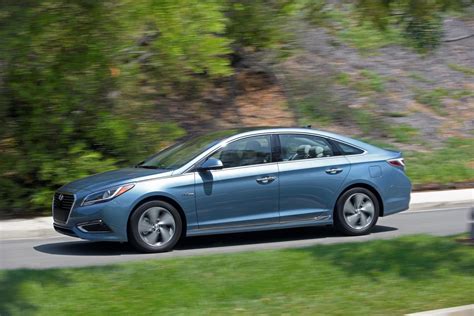

Are you having problems with your 2016 Hyundai Sonata plug-in hybrid?
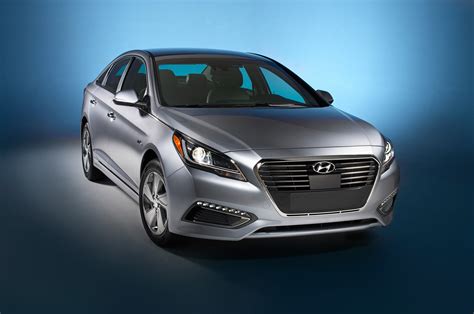


Jaylon Ferry 2025-10-13
(1) Your car has been in for the check engine light 11-13 times. (2) It broke down on the highway due to a hybrid system failure and was at the dealer for over 3 weeks. However, I am happy to inform you that the car was eventually recalled for the above two items and has not been a problem since.
Dino Carter 2025-05-06
The 2016 Plug-Ins have a faulty hybrid battery, which unfortunately led to a recent recall. I had a scary experience when my car cut off on the freeway, and it wasn't the first time my car had to be serviced. In fact, last year it was in service for over a month. However, I am grateful that Hyundai has agreed to repurchase the vehicle. It's a shame that such a great car has these issues.
Jonathan Donnelly 2024-10-28
This car was great for the first 7 months after I bought it brand new. It had super great mileage and was perfect for my wife's daily commute. However, we did experience some frustration when it didn't charge overnight about twice a month. Eventually, it stopped charging entirely and had to spend 9 days in the shop at 7 months. Although it continued to have sporadic charging issues for another 7 months, it eventually stopped charging entirely again and had to spend 41 days in service. Despite these issues, we loved the car until it stopped working. Thankfully, Hyundai agreed to buy it back, following the lemon laws of CA. We have since moved on and now own a 2018 Accord 1.5t Touring.
Darrel Hamill 2024-05-02
I have owned the 2016 Sonata Plug-in Hybrid for just over a year and have driven it for 17,500 miles. Unfortunately, the hybrid system has failed twice in the past three weeks, causing significant inconvenience. The first time, the car wouldn't even start and had to be towed. As a result, I am now hesitant to drive the car due to the possibility of getting stuck. This is not an acceptable situation. Although I lost a week of use during the first dealership visit, the car is now back there again for repairs.
Russ Cassin 2024-02-29
I had an unfortunate experience with my Sonata PHEV where the Hybrid System failed twice within a short span of 1.5 months. Although it has only been 1.5 years since I purchased the car, I faced a serious issue where the Check Hybrid system warning came up and the engine lost power. The first time it happened was on a busy freeway which was a very dangerous and life-threatening situation. The second time it happened was on a 3 lane local Parkway which was also very dangerous as I was left with no power to control the car. The car had to be towed to the dealership both times and it took them a month to fix it the first time. Unfortunately, the same problem occurred again after only 1.5 months and it is back at the dealership. They have informed me that it will take another month to fix it. Although this has been a highly unreliable car for me, I hope that the dealership can fix the issue and restore my trust in the car.